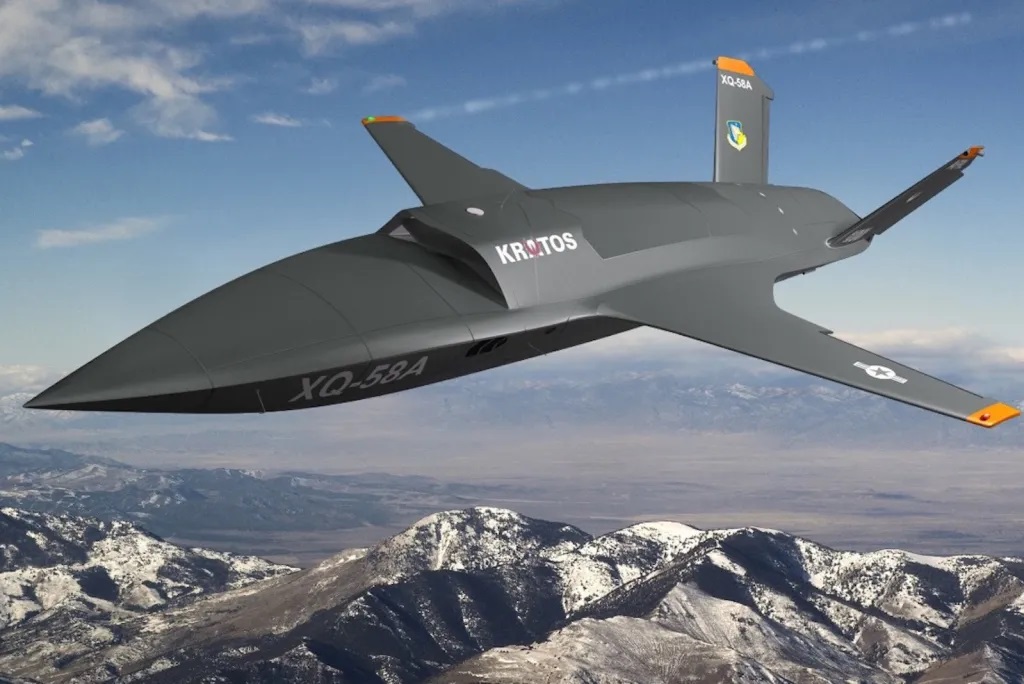US drone swarm program could redefine modern war
The US has unveiled an ambitious program that aims to field massive numbers of drones to overwhelm potential adversaries through the sheer mass of numbers. Such a program may be a game-changer in great power competition, which raises the possibility of large-scale industrial wars of attrition.

Recently, multiple media outlets reported that the US Department of Defense (DOD) had unveiled the so-called Replicator Program to rapidly advance the fielding of attritable autonomous platforms in air, land and sea domains.
Deputy Secretary of Defense Kathleen Hicks announced this as a strategic move to counter China’s rising military capabilities, emphasizing its significance in a potential conflict over Taiwan with an aggressive 18-to-24-month timeline for deployment.
The Replicator program aims to mass-produce low-cost autonomous drones and establish a scalable, rapid technological development process. The Pentagon’s Defense Innovation Unit (PIU) will oversee the effort, working with defense and non-traditional tech companies to expedite development. The project could also include a large-diameter unmanned undersea vehicle program with the US Navy.
Recent advancements in AI, mesh networks and grand networking capabilities have enabled operationalizing the scheme. These technologies will facilitate the platforms’ autonomous, decentralized functioning, even in limited bandwidth conditions. The Replicator aims to serve as a resilient distributed system, offering the advantage of quicker deployment closer to the tactical edge compared to traditional systems.
The Replicator program envisions a shift towards human-operated systems working in concert with autonomous systems and emphasizes ethics and compliance with laws of armed conflict.
It aims to mitigate concerns around the use of autonomous systems in combat, which could significantly influence the future of global conflict and defense technologies while raising critical academic and policy questions.
The US is advancing multiple autonomous drone initiatives that align closely with the objectives of the Replicator to revolutionize future warfare capabilities.
In August 2023, Asia Times reported on tests conducted by the US Air Force on the XQ-58A Valkyrie drone that aimed to showcase its advanced autonomous capabilities in air combat scenarios.

The drone was launched from Eglin Air Base in Florida and successfully carried out aerial combat tasks using AI-driven software. The tests were conducted as part of a more significant effort to develop and mature autonomous capabilities that rely on AI-driven algorithms. These capabilities are now being moved from laboratory environments to operational settings.
The USAF Research Laboratory developed the algorithms used in the tests as part of the Collaborative Combat Aircraft (CCA) program, a critical aspect of the Next Generation Air Dominance (NGAD) modernization initiative.
The tests also established a multi-layer safety framework, solving a tactically relevant challenge during airborne operations that could accelerate the development of drone swarms.
In February 2023, Asia Times reported on the US Autonomous Multi-Domain Adaptive Swarms-of-Swarms (AMASS) project. The project aims to create autonomous drone swarms launched from sea, air, and land to overpower an adversary’s air defenses.
The project’s goal is to develop the ability to command thousands of autonomous drones to destroy an enemy’s defenses, including air defenses, artillery, missile launchers, and intelligence, surveillance and reconnaissance (ISR) platforms.
The AMASS project explores using swarms-of-swarms to conduct military operations in highly contested environments with low-cost swarms equipped with diverse sensors and kinetic and non-kinetic effectors. The AMASS project award is expected to be given to a single private contractor.
These developments underscore the potential tactical and operational advantages of drone swarms, enabling the development of new operational concepts.
In a March 2021 Forbes article, David Hambling mentions that one of the standout features that make drone swarms so formidable in combat is their decentralized operation, letting them adapt on the fly. Hambling notes that drone swarms can perform diverse roles such as surveillance or direct assault, with their coordination enhancing their killing power and resilience against countermeasures.
He notes that drone swarms fit into modern warfighting concepts but pose challenges for existing defense systems due to their complexity and adaptability. The goal is to overwhelm the enemy with weapons and sensor platforms, but today’s systems are not built for this.
Furthermore, the US Defense Advanced Research Projects Agency’s (DARPA) “Mosaic Warfare” operational concept aims to overwhelm adversaries by deploying a highly complex, decentralized and adaptive force composed of various weapon and sensor platforms designed to operate synergistically across multiple domains, thereby turning complexity into an asymmetric advantage.
Mosaic Warfare can be used in a ground battle by sending an unmanned aerial vehicle or ground robot ahead of the main battle force. The robot can spot an enemy tank and relay its coordinates to a non-line-of-sight strike system in the rear. Including aircraft makes it more complex and can overwhelm the opponent’s decision-making.
Mosaic Warfare in the maritime domain adds complexity as it involves air, land, sea and undersea environments. Combatant commanders must mix and match assets across services while expendability is critical. However, creating these systems within systems requires linking them together, which poses significant challenges.
Those projects and emerging operational concepts may tie into more extensive use of drone swarm strategies for a decisive effect in a potential Taiwan Strait crisis.
In May 2022, Asia Times reported that the US Air Force tested autonomous drone swarms in simulations to defend Taiwan from a possible Chinese invasion. The RAND Corporation’s David Ochmanek emphasized the limited time available to the US and its allies to respond during an invasion.
The simulations revealed that drone swarms using a distributed laser data-sharing network were crucial in ensuring a US victory by potentially overcoming China’s anti-access/area denial capabilities.
Autonomous drone swarms could work with stealthy manned platforms such as F-35 and F-22 to hit Chinese warships, aircraft and missile batteries. The networked drones would increase situational awareness and target acquisition capabilities while flooding enemy radar scopes with multiple targets.
However, there are concerns regarding the maturity of the technology and potential vulnerabilities such as Russian and Chinese electronic warfare capabilities, cyberattacks and bandwidth limitations.

At the same time, drone swarms pose significant ethical and legal challenges. Irving Lachow, in a February 2017 Bulletin of Atomic Scientists article, argues that public concern regarding the risks of lethal autonomous weapon systems, especially swarms, is exaggerated.
Lachow says while these systems can learn and evolve, their programming strictly dictates their behavior and ensuring their compliance with international humanitarian law is complex. He notes that defensive swarms may be the only adequate protection against attacking swarms, leading to a potential drone arms race.
Lachow says that the ultimate question is whether lethal autonomous weapon systems should be banned, regulated or allowed without restraint, but points out difficult questions regarding when a ban should occur, how it should be applied, and who will enforce it.
He notes that if regulation is the path forward, similar questions arise about what regulations should be applied, who will decide on them and what the consequences should be for violators.
yogaesoteric
October 18, 2023
